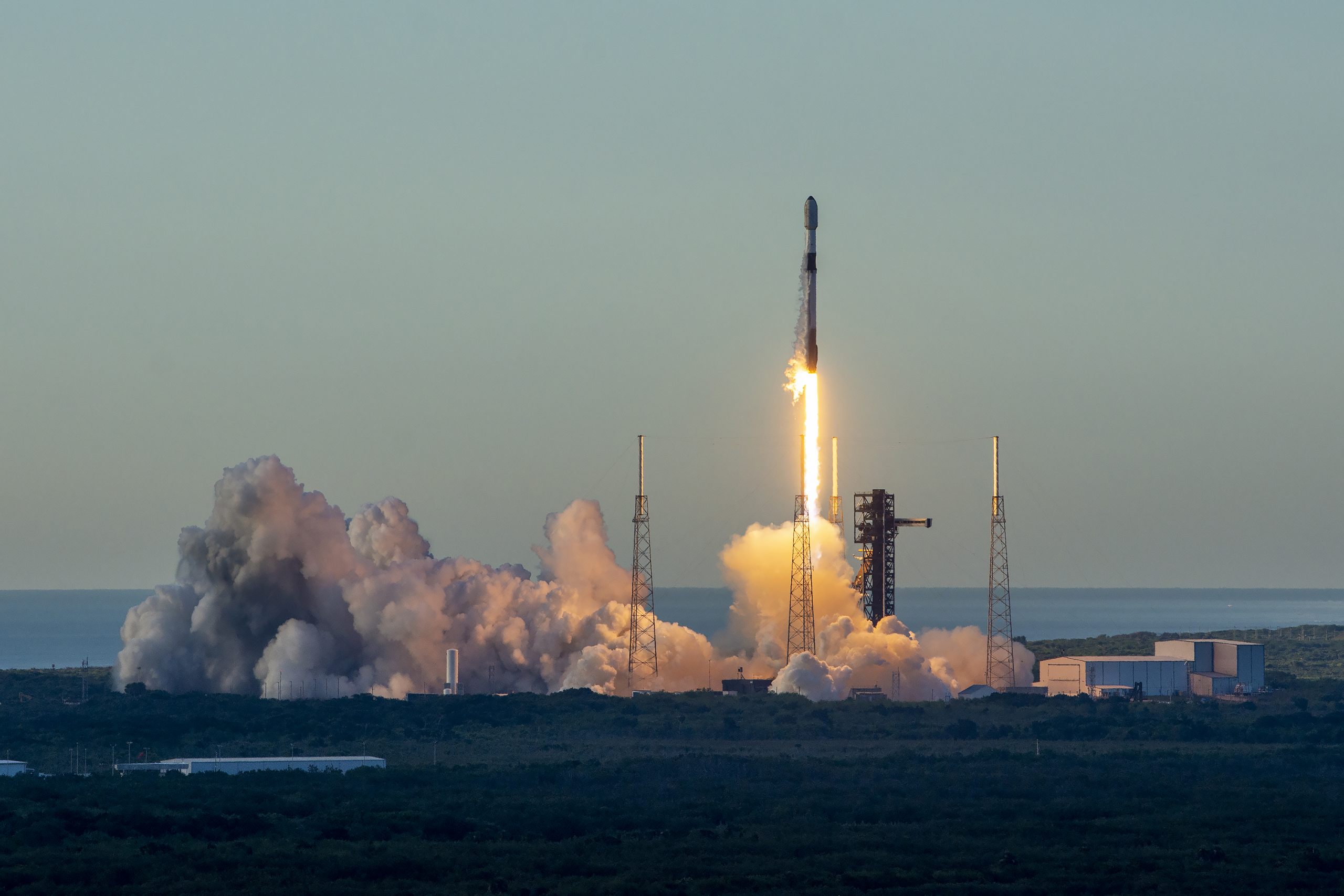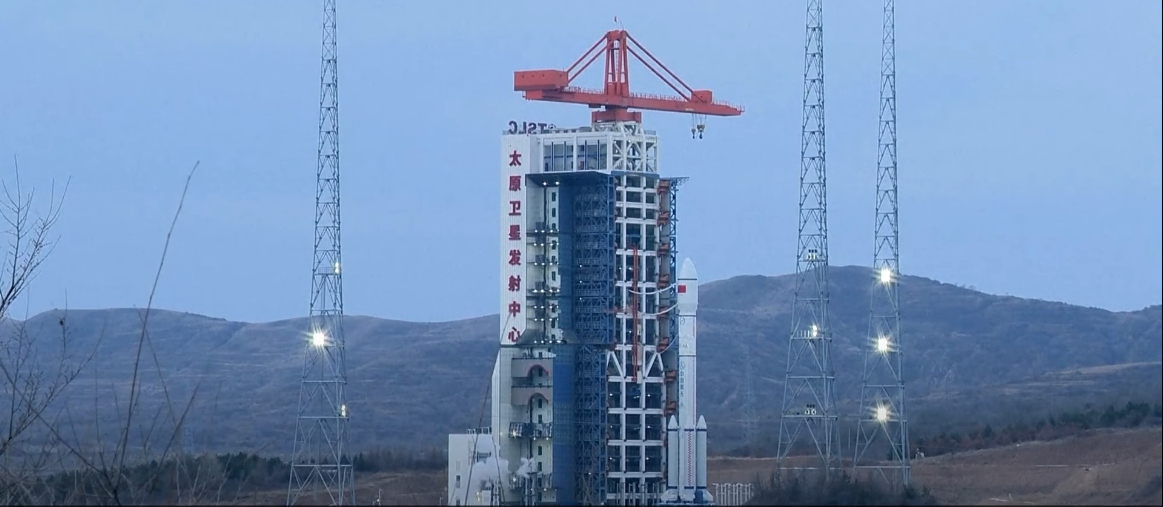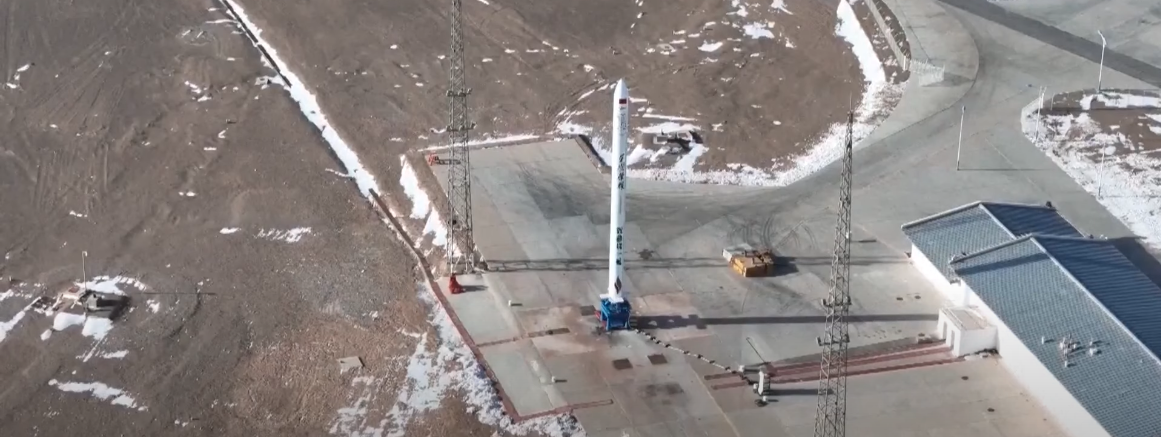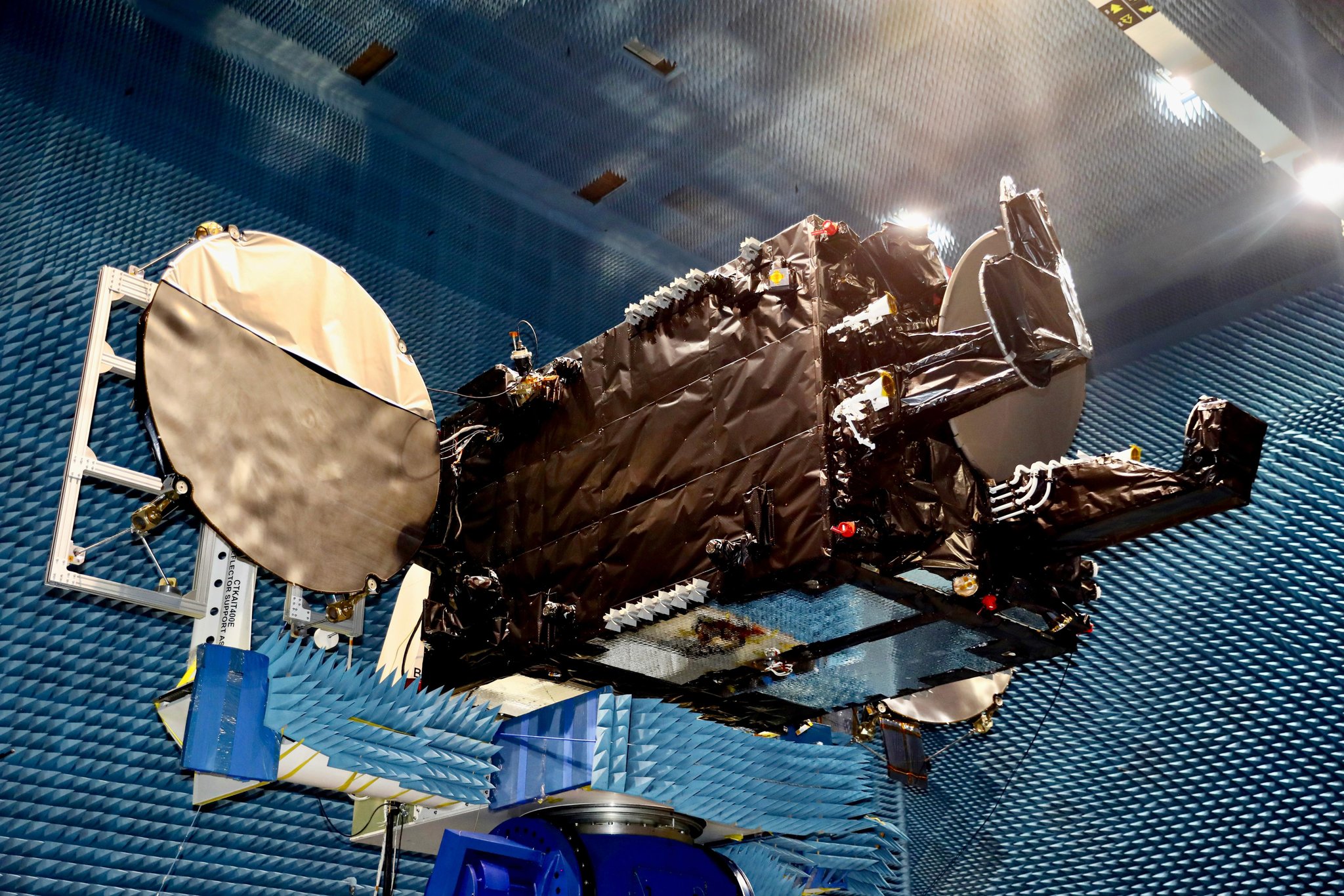As we enter the second half of 2024, the first week of July has already begun with the third launch of Japan’s H3 rocket in the early hours of Monday morning UTC, discussed in our previous launch roundup.
The coming week continues with two Starlink missions from SpaceX, bringing the number of Starlink satellites launched to more than 6,700. Two more launches are planned from China, with the first flight of the year of i-Space’s Hyperbola-1, postponed until Friday, and another mission on a Chang Zheng 6A. SpaceX is also preparing to launch the first communications satellite built in Turkey next Monday.
The fifth flight of Firefly’s Alpha launch vehicle was scheduled for the night of Tuesday, July 2, from Vandenberg Air Force Base, but that date has now been postponed.
This week marks the first anniversary of the last flight of Ariane 5. Its successor, Ariane 6, is now ready for its maiden launch next week.
Another new vehicle, Space Pioneer’s Tianlong-3, which was scheduled for its maiden launch later this year, suffered a setback Sunday when part of the vehicle lifted off ahead of schedule. During a static firing test, the first stage of the rocket, which uses kerosene and liquid oxygen as propellants, left the launch pad and was destroyed after a few seconds of flight, falling 1.5 kilometers (0.9 miles).
Wow. Apparently this was supposed to be a STATIC FIRE TEST today of a Tianlong-3 first stage by China’s space pioneer. It’s catastrophic, not static. The company was aiming for an orbital launch in the coming months. https://t.co/BY9MgJeE7A pic.twitter.com/L6ronwLW1N
— Andrew Jones (@AJ_FI) June 30, 2024
The company reported a structural failure in the connection between the rocket and the test stand. Still in development, this Chinese vehicle is similar in height and approach to the Falcon 9 with a reusable first stage.
In the first half of the year, 124 orbital launch attempts were made, with only a few failures, with 14 crew members and more than 1,330 payloads in orbit. The United States and China accounted for 81% of the launches during those six months, with 57% and 24% of the shares, respectively. SpaceX was responsible for more than half of all orbital launches, with 54%. The only other launches from the United States in the first half of the year were: the last Delta IV Heavy, the first Vulcan Centaur, the recent launch of Starliner’s Atlas V, and an Electron launching a mission for the National Reconnaissance Office.
For comparison, two years ago, that same number of launches wasn’t reached until September, and the number stood at 75 at the halfway point of the year. A year ago, the industry had yet to cross the 100-launch mark, with 98 orbital launches by the end of June. With recent weather-related slowdowns and 67 missions under its belt so far, SpaceX is still less than halfway to its ambitious goal of 148 launches in 2024. There’s still time to hit that goal if the company returns to the launch cadence it posted in May, with 14 flights in the month, according to local time.

Fleet Leader B1062 launches Starlink 10-3 group from SLC-40 last week (Credit: SpaceX)
Falcon 9 Block 5 | Starlink Group 8-9
The first Starlink mission of the week launched from SLC-40 at Cape Canaveral Space Force Station on Wednesday, July 3 at 4:55 a.m. EDT (0855 UTC) near the end of the launch window — it was SpaceX’s 70th launch of the year.
The previous launch from this pad saw the B1062 booster pass the 22-flight milestone for the first time last week. The launch pad will soon perform its 200th Falcon 9 launch, but perhaps not this month, with 196 launches from this location to date, including this mission.
The booster for this mission was B1073, which was on its 16th flight. It had previously supported launches such as Bandwagon-1, CRS-27, Hakuto-R, Amazonas Nexus, SES-22, and 10 Starlink missions. The booster landed on the autonomous droneship A lack of seriousnesswhich had already had 75 successful landings and recoveries prior to this one. This is the booster that suffered a rare ignition failure during an attempted launch of the Starlink 10-2 group in mid-June, which then caused the mission to slip behind Astra 1P and launch with an alternate booster, B1078.
With this mission, the company has launched more than 6,700 Starlink satellites to date. As of the beginning of this week, SpaceX had launched 6,698, of which 477 had re-entered the atmosphere and 5,232 had entered their operational orbit. The company last week added Madagascar to the long list of more than 100 countries now able to access the high-speed, low-latency internet service.
Firefly Alpha FLTA005 | ELaNa 43 “The Sound of Summer”
Originally scheduled for Wednesday, June 26 at 9:03 PM PDT (Thursday, June 27 at 04:03 UTC), the launch of the first flight of Firefly Aerospace’s two-stage Alpha rocket in 2024 took place on schedule at 9:04 PM PDT on July 3 (04:04 UTC on July 4). A launch attempt on Monday, July 1 was aborted seconds before liftoff due to an issue with ground support equipment on the launch pad. The mission is scheduled to launch from SLC-2W at VSFB with a set of CubeSats in orbit.
The launch was successful, with the second stage achieving nominal orbit insertion and entering a 40-minute coast phase prior to payload deployment.
LAUNCH! Firefly Alpha launches mission FLTA005 “Noise of Summer” from SLC-2W at Vandenberg.
Preview: https://t.co/DC8IosU8FR
NSF/Firefly Live Stream: https://t.co/n0IWI9nxeM pic.twitter.com/Xb0hDJKzWn
— Chris Bergin – NSF (@NASASpaceflight) July 4, 2024
This mission is part of NASA’s Venture Class Launch Services Demonstration 2 contract with Firefly. The eight CubeSat payload satellites include four built by universities, one built by an educational nonprofit, and three built by NASA.
The Venture-class Launch Services program aims to provide more frequent and less costly access to space for payloads with a higher risk tolerance. Payloads built by educational institutions and nonprofit organizations are eligible for selection under NASA’s CubeSat Launch Initiative (CSLI), designed to support such projects, and each flight is assigned an Educational Launch of Nanosatellites (ELaNa) mission name and number, with this flight being ELaNa 43.
NASA’s Johnson Space Center in Houston is flying two R5 satellites, S4 and S2 2.0. These small, free-flying devices are built from commercial-off-the-shelf (COTS) components and are intended to test their suitability as low-cost, on-orbit inspection devices.
NASA’s Ames Research Center also has a satellite on board — TechEdSat 11 (TES 11) — that includes the latest and largest iteration of NASA’s Ames Exo-Braking Experiment, which uses an umbrella-like device to increase a spacecraft’s drag and safely deorbit it more quickly.
For more information on payloads, please see our flight article.
Last week, Firefly announced a partnership with the Swedish Space Corporation to jointly launch satellites from the recently opened Esrange Space Center in Sweden, with a goal of a first launch in 2026. The FAA also added Firefly’s vehicles to its Space Data Integrator last week, tracking them in near real-time during launch operations.

Chang Zheng 6A before the launch of Yunhai-3 02 in March 2024 (Credit: CASC/CCTV)
Chang Zheng 6A | Payload unknown
A Chang Zheng 6A is scheduled to launch from LC-9A at the Taiyuan Satellite Launch Center in China on Thursday, July 4 at 23:00 UTC.
This will be the third launch of this type of two-stage vehicle, active since 2022 and capable of lifting 5,000 kg into orbit, assisted by four lateral thrusters. The single-sleeve CZ-6C variant made its debut last May.
The payload will likely not be known until after launch. It is possible that it will be the third satellite in the Yunhai-3 series, which would be used for atmospheric, oceanic and environmental research. The same type of vehicle carried the second in this series in early March and the first in late 2022.
Hyperbole-1 | Unknown payload
The launch is scheduled from Site 95A of the Jiuquan Satellite Launch Center in China on Friday, July 5 at 23:40 UTC. The Hyperbola-1, also known locally as the Shuang Quxian-1 or SQX-1, is a four-stage solid-fuel rocket guided by liquid-propellant engines. It will be the seventh flight to date for this type of vehicle.
The Hyperbola-1 made its first flight five years ago this month. It successfully completed its first flight with a 50 percent success rate after some problems during early flights, such as stuck fuel valves and payload fairings that wouldn’t separate. The last two missions, however, have been successful, carrying a dummy payload and then the experimental recoverable spacecraft prototype DEAR-1 into sun-synchronous orbit last December. Beijing-based i-Space became the first private Chinese company to reach orbit with the vehicle’s maiden flight.
Measuring just under 21m long and 1.4m in diameter, the vehicle can launch up to 300kg into low Earth orbit. Details of the payload and its destination have not yet been released ahead of launch.

Hyperbola-1 ahead of DEAR-1 launch in December 2023 (CCTV credit)
Falcon 9 Block 5 | Starlink Group 9-3
A second Starlink mission is scheduled for this week, launching from SLC-4E at Vandenberg Space Force Base in California on Saturday, July 6 at 8:33 p.m. PDT (03:33 UTC on July 7). While the booster has not yet been announced, it is expected to land on the autonomous droneship, Of course I still love you, waiting about 600 km downstream.
Falcon 9 Block 5 | Türksat 6A
The launch of Turkey’s first large communications satellite is scheduled for Monday, July 8 at 5:20 p.m. EDT (21:20 UTC) from SLC-40 at Cape Canaveral Space Force Station in Florida. The communications satellite will be launched into a geosynchronous transfer orbit en route to a geostationary orbit 35,786 km above the equator, positioned at 42 degrees east longitude. The booster and autonomous drone ship that will support this mission have not yet been confirmed.
Weighing approximately 4,250 kg with onboard thruster, the satellite is equipped with 20 Ku-band transponders and 3 X-band transponders. It will provide data relay for commercial, civil government and military communications in Europe, North Africa, the Middle East and much of Asia.

Türksat 6A after construction and testing in March, before being shipped to Florida (Credit: TÜBİTAK UZAY / Turkish Century)
The Türksat 6A project began almost ten years ago and the main contractor, TÜBİTAK UZAY, announced that its reach would cover 118 countries and up to 4.5 billion people.
(Main image: Falcon 9 launch (Credit – Julia Bergeron for NSF)